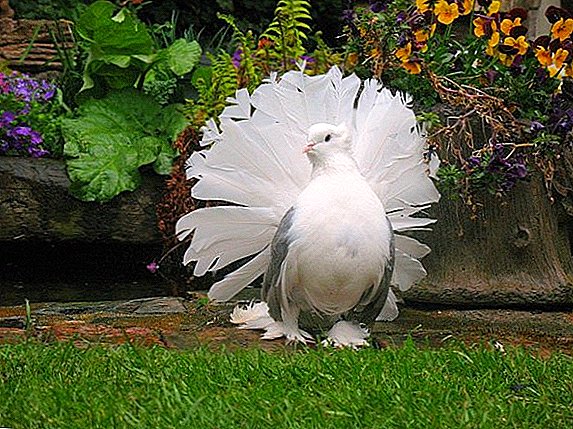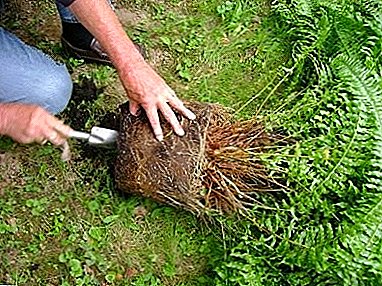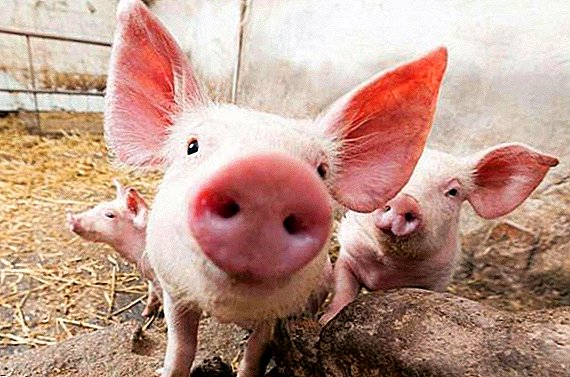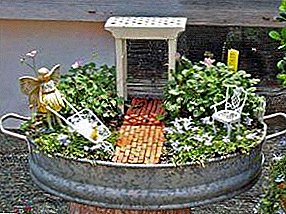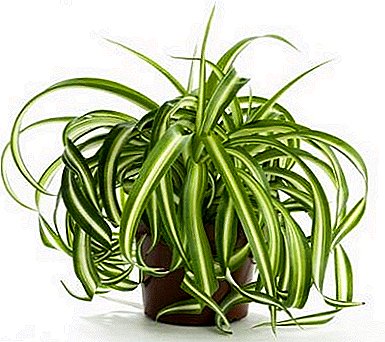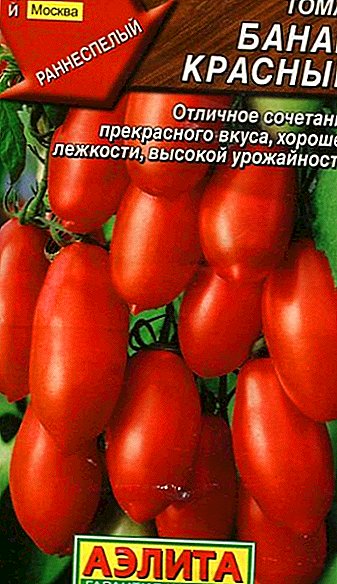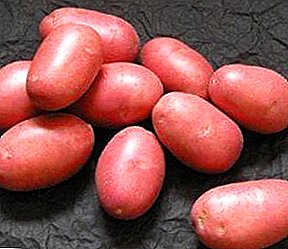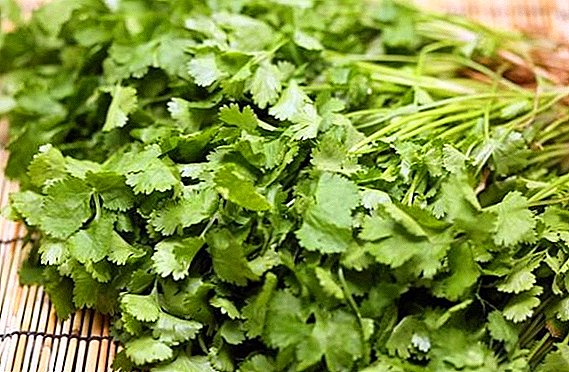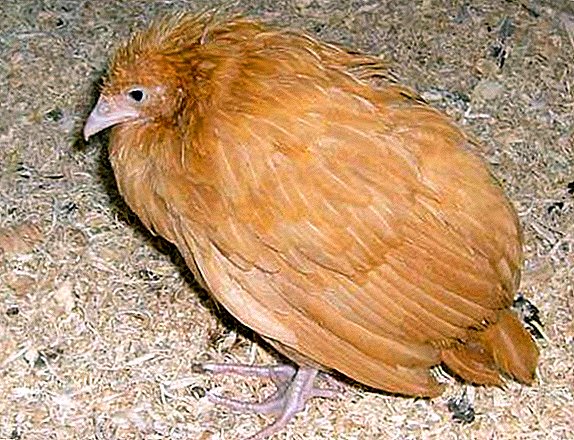 Any beginner poultry farmer needs to be prepared for the fact that lovingly grown birds for no reason at all pick up some infection and begin to die literally before our eyes. No wonder popular wisdom says: chickens in the fall count. But the trouble is not only that poultry is prone to a huge number of dangerous diseases, but the fact that if some of them have pronounced symptoms, are easily diagnosed and suggest a clear treatment algorithm, others remain hidden for a long time and manifest themselves when the infection has affected all livestock. The best way to deal with such diseases is to prevent them, but knowing what happened to your bird and how to save it is still necessary.
Any beginner poultry farmer needs to be prepared for the fact that lovingly grown birds for no reason at all pick up some infection and begin to die literally before our eyes. No wonder popular wisdom says: chickens in the fall count. But the trouble is not only that poultry is prone to a huge number of dangerous diseases, but the fact that if some of them have pronounced symptoms, are easily diagnosed and suggest a clear treatment algorithm, others remain hidden for a long time and manifest themselves when the infection has affected all livestock. The best way to deal with such diseases is to prevent them, but knowing what happened to your bird and how to save it is still necessary.
Coccidiosis (also known as emiriosis), which will be discussed below, is just one of those diseases that are difficult to detect, it is even more difficult to treat, but it can be prevented if you know what the disease is and why it occurs.
Coccidiosis: a description of the disease
So, if we talk about what is coccidiosis, first of all you need to get acquainted with its pathogen. it the simplest single-celled parasite, very quickly breeding and capable of covering a huge territory in a relatively short time and striking a very large number of birds.
 Coccidia enter the body of poultry with food or water, which, in turn, parasite eggs can get from the droppings of an infected animal. Further, coccidia penetrate the intestine, where, having freed themselves from the egg, they invade the cells (more often it occurs in the front part of the small section, less often in the rectum or cecum) and begin to actively proliferate, resulting in some time in poultry, digestion is completely impaired, nutrients are no longer absorbed by the body, dehydration occurs, severe blood loss and, especially scary, the immune system is seriously impaired.
Coccidia enter the body of poultry with food or water, which, in turn, parasite eggs can get from the droppings of an infected animal. Further, coccidia penetrate the intestine, where, having freed themselves from the egg, they invade the cells (more often it occurs in the front part of the small section, less often in the rectum or cecum) and begin to actively proliferate, resulting in some time in poultry, digestion is completely impaired, nutrients are no longer absorbed by the body, dehydration occurs, severe blood loss and, especially scary, the immune system is seriously impaired.
Important! A bird infected with coccidiosis almost completely loses its resistance to other dangerous diseases and is subject to a manifold increased risk.
Poultry coccidiosis is a very common disease, and there are quite objective reasons for this. The fact is that there are a huge number of types of pathogens of this disease, and if you identify and successfully cure your birds from one strain in time, this will in no way save them from being infected with any other.
Did you know? Scientists have described eleven different types of coccidia (Eimeria) affecting domestic chickens, the most common among them are Eimeria Tenella, Emeria Nekatrix, Emeria Brunetti, Eimeria Maxim and Emeria Acervulin. In turkeys, the main “enemy” is eimeria meleagrimitis and eimeria adenoids, in geese - eimeria trunkata, and ducks most often affect tizzeria pemitsiosis.
From the above example, one can imagine that a disease such as coccidiosis, say, in broilers can actually be caused by a dozen different (albeit of the same type) pathogens, and the successful treatment of one type of coccidiosis in chickens does not ensure their resistance (immunity) to others species of parasite. But the pathogen itself has an excellent ability to adapt to various drugs aimed at combating it, and this is another danger of the disease.
Important! Despite all the above, adult birds still do not often die from coccidiosis, and even being infected, do not show external signs of the disease. But for young chickens, especially between the ages of two weeks and a month and a half, this disease is truly dangerous.
The main symptoms of coccidiosis in chickens, diagnosis of the disease
 Coccidiosis in chickens has a very unpleasant feature for a long time without any external symptoms, which makes it difficult to diagnose it in time and, consequently, successful treatment. However, in the acute form of the disease, the incubation period passes rather quickly - from four days to a week.
Coccidiosis in chickens has a very unpleasant feature for a long time without any external symptoms, which makes it difficult to diagnose it in time and, consequently, successful treatment. However, in the acute form of the disease, the incubation period passes rather quickly - from four days to a week.
The first signs that may indicate the presence of coccidiosis in chickens are rather vague and are mainly expressed in the behavior change in the bird. The chicken does not eat well, is sluggish, carries fewer eggs. Later you can see more vivid symptoms - change in plumage, weight loss (due to dehydration). The disease can be noticed by bird droppings - it becomes liquid, frothy, first greenish, later brown, and in the litter there are bloody discharges.
Did you know? The sudden death of poultry from bloody diarrhea has long caused superstitious horror among our ancestors.Coccidiosis in chickens can be identified by such symptoms as the appearance of cyanosis of the skin, increased thirst, increased goiter, weight invariance with increased feed intake, growth arrest. Chickens become inactive, they sit for a large part of the day loudly, eat poorly, coordination of movement is disturbed, the chicks move reeling with lowered wings and head extended.
 In the acute course of the disease, chickens die a few days after the first signs appear, with chronic, they can suffer for up to two months, losing up to 70% of their weight, weakening and stopping to grow. Sometimes there is paralysis of the limbs, and, as was said, resistance to viral and bacterial infections weakens greatly.
In the acute course of the disease, chickens die a few days after the first signs appear, with chronic, they can suffer for up to two months, losing up to 70% of their weight, weakening and stopping to grow. Sometimes there is paralysis of the limbs, and, as was said, resistance to viral and bacterial infections weakens greatly.
An exact diagnosis to a bird can only be made by a veterinarian on the basis of laboratory tests of a litter, scrapings or a smear where it is possible to detect the eggs of a pathogen. In chickens who died of coccidiosis, the intestine resembles a swollen bladder filled with liquid feces with bloody patches.
Important! Without timely intervention, the disease can easily be “mowed down” by a third of the chickens, and those individuals that survive will forever remain carriers of the disease and will pose a danger to future generations.
Causes of the disease
 As has been said, the transmission of infection occurs through the fecal-oral route, that is, the bird eats food or drinks the water in which the pathogen eggs are located there through the droppings of sick birds. In addition, infection can occur through grass, soil or litter, where the pathogen can be transmitted by wild birds, insects or rodents.
As has been said, the transmission of infection occurs through the fecal-oral route, that is, the bird eats food or drinks the water in which the pathogen eggs are located there through the droppings of sick birds. In addition, infection can occur through grass, soil or litter, where the pathogen can be transmitted by wild birds, insects or rodents.
A person is susceptible to coccidiosis in the same way as other animals, therefore, taking care of the bird and not observing the rules of personal hygiene, we can bring the infection to the chicken coop.
Did you know? Coccidiosis eggs retain their viability in soil for up to nine months, and in grass - up to one and a half years. Nevertheless, in the spring and summer, the pathogen is most active, so the main outbreaks of the disease fall precisely at this time.
Having picked up the bacteria, the chicken already on the fourth day becomes a source of infection, singling out coccidia in the litter.
How to cure coccidiosis in chickens
Coccidiosis in chickens involves two main methods of treatment: the first is aimed at preventing infection of the birds from the outside, the second - to fight the pathogen that has already entered the chicken's body.
The first way is called prevention in a simple language; we’ll dwell on it a bit later. Modern drugs for coccidiosis give a sufficiently high result and are aimed at suspending or completely suppress the reproduction of Eimeria in the chicken. Some of these medicines, however, have the ability to prevent the bird from developing its own immunity to the pathogen.
Did you know? European scientists have revealed the amazing ability of natural oregano essential oil to prevent the penetration of coccidia into the intestinal cell. Thanks to this sensational discovery, the addition of such oil to poultry feed makes it possible to almost completely forget about outbreaks of bloody diarrhea. Unfortunately, the technology of production of such oil (a necessary condition for success is the complete absence of any additives and impurities to it) is very complex and has been mastered by only one German company.

In the meantime, natural ways to deal with a peddler for most farmers are not available, we have to use traditional coccidiostats for treating coccidiosis in poultry. It is rather difficult to use such preparations, because coccidia very quickly get used to them, therefore it can be said that the procedure for treating coccidiosis in chickens is often associated with the use of trial and error.
For the treatment of coccidiosis in chickens, as well as broilers and adult birds, the prescribed drug is added to feed or water and, once ingested, blocks the development of the pathogen.
Important! Perhaps the most difficult moment in the treatment is to ensure that all animals, without exception, get into the stomach, and this must happen in one meal, otherwise the medicine will lose its effectiveness.
Among the most well-known drugs for the treatment of coccidiosis in chickens are the following:
- coccyprodin: the drug is indicated in coccidiosis in chickens and broilers, the treatment is that the active substance is introduced into the pathogen regardless of the stage of development, while the body’s own defense against the disease is not in any way suppressed. The disadvantage of this coccidiostatic is that it can not be used for the treatment of hens;
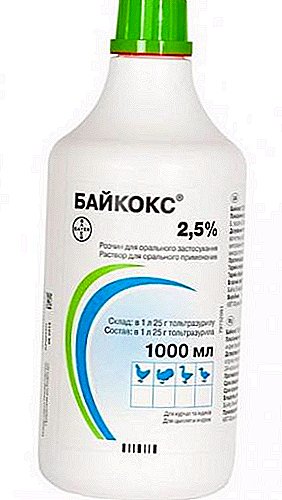 Avatek 15% SS kills coccidia at the ion level and is easily excreted from the body;
Avatek 15% SS kills coccidia at the ion level and is easily excreted from the body;- baycox effective when added to drink in strict proportions, chicken should drink such water for two days;
- coccidiosis suitable for both chickens and adult birds, but such meat should not be eaten if the bird was slaughtered earlier than one week after the end of treatment.
In addition to medications, the diseased bird must be strengthened by adding iron sulfate, methionine and other mineral additives to the feed, as the body suffers a serious shortage of certain amino acids and other elements during this period.
How to prevent coccidiosis in chickens: preventive measures
Like any other dangerous disease, it is better to prevent coccidiosis in chickens than to cure.
Prevention of coccidiosis in chickens is a whole system of measures - from vaccination to disinfection.
Vaccination is carried out, as a rule, in respect of young animals that are not planned for slaughter in the first months of life. It is believed that it does not make sense to vaccinate against coccidiosis for broilers, since even a mild infection dramatically affects the growth of the chicken and the increase in weight, even though it is planned to slaughter the bird in a few months.
For laying hens, by contrast, vaccination is extremely effective.Because the external signs of the disease, as has been said, manifest themselves in a decrease in the number of eggs, and the effect persists for several months after the bird has fully recovered. Properly chosen vaccine, vaccinated to a bird in the first days of life, gives a stable immunity (but only to a specific type of pathogen).  The second way to prevent coccidiosis is immunochemical prophylaxis. It consists in the fact that the young bird is fed the minimum number of the three most common strains of coccidia in order to develop immunity. The method allows in the future to seriously alleviate the course of the disease and drastically reduce the number of medicines needed for its treatment.
The second way to prevent coccidiosis is immunochemical prophylaxis. It consists in the fact that the young bird is fed the minimum number of the three most common strains of coccidia in order to develop immunity. The method allows in the future to seriously alleviate the course of the disease and drastically reduce the number of medicines needed for its treatment.
Disinfection is also a preventive measure.
Important! Coccidia are practically not afraid of frost, but they easily perish from high temperature and dryness. Therefore, in order to disinfect, it is effective to burn the walls of the poultry house and inventory with a blowtorch or pour it with boiling water and dry the litter in direct sunlight.
It must be admitted that this method is not very effective against coccidiosis.  due to the strong resistance of the pathogen to conventional disinfectant mixtures, such as formalin, alkali, potassium permanganate, soap solutions, etc.
due to the strong resistance of the pathogen to conventional disinfectant mixtures, such as formalin, alkali, potassium permanganate, soap solutions, etc.
Accordingly, the content of chickens in moisture and dirt is a direct way to infection.
As a preventive measure, it is also recommended to add shells and table salt to feed.
To summarize, the main rules of coccidiosis control in poultry are as follows:
- dryness and cleanliness in the hen house
- limiting contact between chickens and adult birds;
- regular replacement of water in the water trough and feed to avoid dropping into them;
- balanced and high-quality food;
- heat treatment of equipment, poultry house and poultry walking area;
- regular cleaning of the litter room;
- the addition of coccidiostatics to food for prophylactic purposes with a constant change of drugs in order to avoid addiction.


 Avatek 15% SS kills coccidia at the ion level and is easily excreted from the body;
Avatek 15% SS kills coccidia at the ion level and is easily excreted from the body;